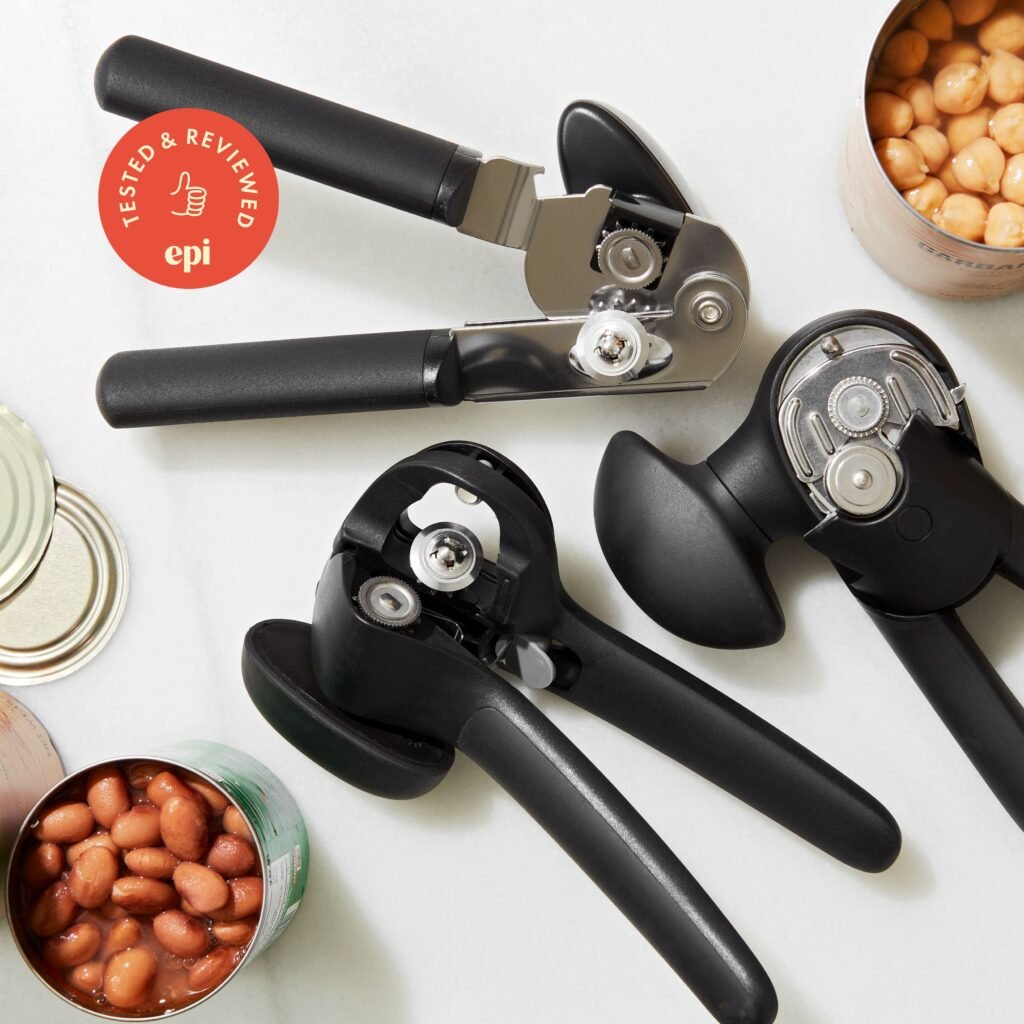Can openers are one of those kitchen gadgets that seem mundane but are indispensable in everyday life. This humble tool, designed to open cans of food, has a rich history and comes in various types, each offering different functionalities. Whether you’re a culinary enthusiast or someone who simply needs to get through dinner prep quickly, understanding can openers can enhance your kitchen experience.
The History of the Can Opener
The history of the can opener is closely tied to the history of canned food. The first cans, which appeared in the early 19th century, were robust and made from wrought iron. These cans were initially opened using a chisel and hammer, which was both inconvenient and dangerous.
The first can opener patent was issued in 1855 in England to Robert Yeates, who designed a claw-shaped opener. This design was a significant improvement but still required considerable effort to use. In 1870, William Lyman patented a much more user-friendly design, featuring a rotating wheel that cut along the can’s rim. This design laid the foundation for the modern can openers we use today.
Electric can openers made their debut in the 1950s, adding a new level of convenience and efficiency. Since then, the can opener has continued to evolve, with innovations focusing on safety, ease of use, and multi-functionality.
Types of Can Openers
Can openers come in various designs, each catering to different needs and preferences. Here’s a breakdown of the main types:
1. Manual Can Openers
a. Butterfly Can Opener: Also known as a church key, this is one of the oldest designs. It requires considerable manual effort and skill to use effectively.
b. Rotary Can Opener: This design features a cutting wheel that rotates around the can’s rim. It’s the most common type of manual can opener and is known for its reliability and ease of use.
c. Side-Cutting Can Opener: Unlike traditional can openers that cut the lid from the top, side-cutting openers remove the lid from the side, resulting in smooth edges and a safer process.
2. Electric Can Openers
Electric can openers offer a hands-free solution to opening cans, making them ideal for people with arthritis or limited hand strength. They generally consist of a rotating cutting mechanism and a motor that powers the device. Some models are multi-functional, incorporating bottle openers and knife sharpeners.
3. Portable Can Openers
These compact, lightweight can openers are perfect for camping and outdoor activities. They are usually manual and designed to be small enough to fit in a backpack or camping kit.
How to Choose the Best Can Opener
Choosing the right can opener depends on your needs and preferences. Here are some factors to consider:
1. Frequency of Use
If you frequently open cans, investing in a durable, high-quality can opener is essential. Electric can openers are particularly useful for frequent users, as they save time and effort.
2. Ease of Use
For those with limited hand strength or arthritis, an electric can opener or a side-cutting manual opener with ergonomic handles is a good choice. Look for models that require minimal force and are easy to operate.
3. Safety Features
Safety is a crucial factor when choosing a can opener. Side-cutting can openers are often safer because they leave smooth edges. Additionally, look for models with non-slip grips and easy-to-turn handles.
4. Durability
A can opener should be made from high-quality materials that resist rust and wear. Stainless steel blades are a good option, as they are durable and easy to clean.
5. Multi-functionality
Some can openers come with additional features, such as bottle openers, knife sharpeners, and jar openers. If you value multi-functional tools, look for models that offer these extras.
Best Practices for Using Can Openers
Using a can opener correctly can extend its lifespan and ensure safety. Here are some tips:
1. Keep It Clean
After each use, clean your can opener to prevent food buildup and rust. Manual can openers can be washed with soap and water, while electric models often have removable parts for easy cleaning.
2. Regular Maintenance
Regularly check the cutting wheel for sharpness and alignment. If the blade becomes dull, it can slip and cause accidents. Some manual can openers have replaceable blades, so consider this when purchasing.
3. Proper Storage
Store your can opener in a dry place to prevent rust. If possible, keep it in a drawer or on a magnetic strip away from moisture and humidity.
4. Use It Correctly
Always ensure the can opener is properly aligned with the can’s rim before cutting. Applying even pressure and turning the handle smoothly will result in a clean cut and prevent damage to the opener.
Conclusion
The can opener is a small but mighty tool that plays a vital role in modern kitchens. From its humble beginnings to the advanced models available today, can openers have come a long way. By understanding the different types and best practices, you can choose the perfect can opener to suit your needs, ensuring your kitchen runs smoothly and safely. Whether you prefer a manual, electric, or portable model, there’s a can opener out there that’s just right for you.


